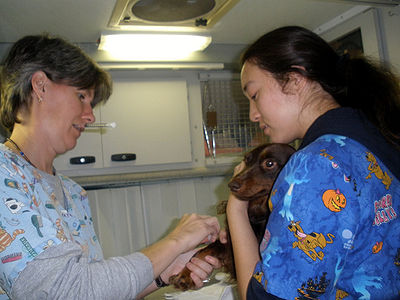
Giving pets their meds can sometimes be challenging. Our pets don’t always cooperate, but we can find ways to trick them into taking their meds.
Dogs especially will do anything for food. And there are a number of foods that will disguise pills or liquids.
One method is to crush the pills and mix them in a liquid such as milk and add them to their dinner. Of course if your pet smells the meds, he may not want to eat.
There are a number of people foods that that work. Butter, tuna, cheese, cream cheese, cottage cheese, meat, deli slices, yogurt, peanut butter are all foods that pets really love. Just put the pill (or crushed pill) in one of these foods and your pet will gobble it up.
The Greenies company makes something they call the Pill Pocket. It’s a soft nugget open at one end. You place the pill inside and gently squeeze the nugget closed.
Cats can be more difficult when administering meds. Keep calm as this will reassure your cat. It sometimes takes 2 people working together to give a cat his medication. Best to wrap the cat in a towel so that he can’t claw you. Try placing a finger on either side of the mouth. This should help the cat open his mouth. Place the pill far back in the throat and gently rub the chin and neck area to aid in swallowing. A syringe will work for liquid meds.
A syringe can also be used when administering liquids to dogs. You can also use the same method for dogs as for cats giving pills. Open your dog’s mouth and place the pill far back in the throat and gently rub the neck area to facilitate swallowing.
There are pill dispensers on the market now that are inexpensive. Some have a split, soft rubber tip attached to a plastic shaft with a syringe-like plunger.
Compounding pharmacies can be found throughout the U.S. Compounding pharmacists can mix meds to taste like treats. These medications are prescription only, so you’ll need to ask your vet about prescribing the medication for your particular pet’s needs. When choosing a compounding pharmacist, make sure he/she will be willing to provide ingredient information when requested by your veterinarian.
If you give your pet non-prescription supplements regularly, many companies make them with a taste your pet will enjoy.
With all medication, it’s very important to follow your vet’s directions precisely. If you feel any changes are necessary, consult with your veterinarian.
Related articles:



